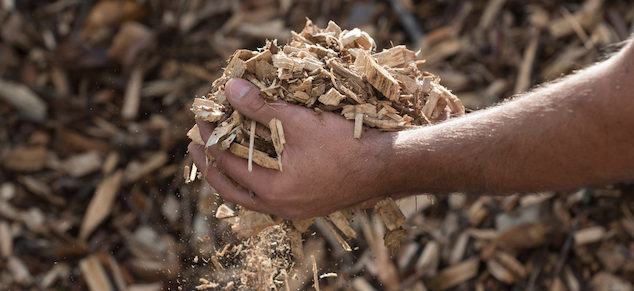Opinion
Bioenergy: Clean power that helps us meet climate goals
 Wood chips that serve as a renewable heating and energy sources. (Photo: Elmar Gubisch, via Shutterstock)
Wood chips that serve as a renewable heating and energy sources. (Photo: Elmar Gubisch, via Shutterstock)Wednesday, Oct. 20, marks National Bioenergy Day, where we celebrate the benefits the industry provides.
Bioenergy helps the state become less reliant on fossil fuels using resources from the agricultural and forestry sectors. The residuals from those industries are used to produce renewably fueled electricity.
The primary benefit of bioenergy is green, renewable power. For example, the energy produced in California biomass facilities is enough to power all of the homes in Sacramento County. Biomass is also a reliable power source to stabilize the grid when other intermittent renewable energy sources are unavailable.
Some biomass facilities have closed, and open burning nearly tripled in the Central Valley.
Bioenergy offers cleaner disposal of woody waste. California biomass facilities annually utilize more than six million tons of woody debris and crop residue from the agricultural industry, forest management projects, and post-fire recovery. These facilities convert this material into renewable energy – using enough to fill the entire Rose Bowl twenty-five times over.
In fact, the Air Resources Board has found bioenergy facilities cut the most harmful climate pollutants by up to 98 percent compared to other waste disposal alternatives like open burning.
In agricultural areas, the best alternative to bioenergy facilities accepting agricultural waste is open burning. Unfortunately, the loss of biomass facilities in the Central Valley led to more open burning. According to the San Joaquin Valley Air Pollution Control Board, in 2011, more than 200,000 tons of agricultural waste was open burned. Since that time, some biomass facilities have closed, and open burning nearly tripled in the Central Valley.
Bioenergy is an essential tool in forest management and wildfire mitigation. As Gov. Newsom stated earlier this year, “California is taking bold, early action to protect our high-risk communities from the upcoming wildfire season before it starts. This crucial funding will go towards efforts including fuel breaks, forest health projects, and home hardening.”
The biomass plant outside of Susanville stepped up and helped its neighbors by keeping the lights on.
The governor’s actions included businesses utilizing wood and forest biomass, such as biomass facilities. Without biomass facilities, open burning is one of the few options for removing dead and dying trees and other high fire hazards. The biomass facilities convert forest residuals into renewable power while minimizing environmental impacts and wildfire risks.
Biomass facilities also serve as backup power in isolated, rural areas. For example, during the Dixie Fire the main transmission line was damaged, leaving the eastern Sierra without power.
The biomass plant outside of Susanville stepped up and helped its neighbors by keeping the lights on. Acting as a microgrid, the biomass facility provided power to the local utility as it has done in previous years when winds and fires have caused the transmission lines to be unavailable.
The biomass industry is a part of the fabric of many rural communities. In California alone, the biomass industry employs more than 2,000 Californians. In many communities, biomass facilities are one of the largest employers in the community. The facilities provide fair family-wage jobs with the majority of those positions in rural disadvantaged communities.
So as we celebrate Bioenergy Day, we need to remember the benefits the industry offers from clean, renewable energy and much more. Biomass energy’s ancillary benefits are endless and essential to preserving our rural communities and forested areas.
—
Editor’s Note: Julee Malinowski-Ball is executive director of the California Biomass Energy Alliance.
Want to see more stories like this? Sign up for The Roundup, the free daily newsletter about California politics from the editors of Capitol Weekly. Stay up to date on the news you need to know.
Sign up below, then look for a confirmation email in your inbox.

Leave a Reply